Alternatives to Maslow’s Hierarchy of Needs
Maslow’s Hierarchy of Needs has long been the dominant paradigm in the field of human motivation. It correctly “ranks” human needs in a logical order, and has become the standard against which other motivation theories are compared.
Although Maslow’s theory is widely accepted, there are a number of criticisms leveled against it. Additionally, several other theories have been proposed as alternatives.
In particular, we need to look carefully at the rampant individualism of Maslow’s theory. Maslow’s hierarchy doesn’t really take into account the fact that human beings are social animals, and that our needs are often shaped by our relationships with others.
We also need to question the linearity of Maslow’s hierarchy. Critics argue that human beings are not always motivated by the need to satisfy their most basic physiological needs before moving on to higher-order needs. In fact, our needs are often shaped by the complex interaction of many different factors, and we may move back and forth between different levels of need in a non-linear fashion.
Finally, we need to consider the fact that Maslow’s hierarchy is based on a very Western and privileged understanding of human motivation. It doesn’t take into account the fact that people in different cultures and socioeconomic groups may have different needs, and may be motivated by drastically different factors.
Maslow’s Hierarchy of Needs
The hierarchy of needs is a motivational theory in psychology proposed by Abraham Maslow in his 1943 paper “A Theory of Human Motivation”.
Maslow’s theory suggests that there are five hierarchy of human needs which are arranged in a pyramid.
- The most basic level contains the physiological needs such as air, food, water, shelter and sleep.
- Once these basic needs are met, the individual will move on to safety needs such as personal security, financial security and health.
- After meeting the safety needs, the individual will search for love and belonging such as intimate relationships, friendships and a sense of community.
- Once these needs are met, the individual will work towards self-esteem needs such as self-respect, achievement and status.
- And finally, once all of these needs have been met, the individual will work towards self-actualization which is the realization of one’s full potential.
Meeting Needs
In practice, meeting these needs is not always a linear process. For example, an individual may search for love and belonging even if their safety needs are not met.
Furthermore, the order of the hierarchy of needs is not always absolute. An individual may be motivated by different needs at different times.
Additionally, there are actions a person can take that could meet multiple needs simultaneously.
For example, volunteering for a charity could meet the need for self-esteem as well as the need for love and belonging.
Criticisms of Maslow’s Hierarchy of Needs
There are a number of criticisms of Maslow’s theory, including:
– The hierarchy of needs is too individualistic and doesn’t take into account the fact that human beings are social animals.
– The order of the hierarchy of needs is not always absolute.
– There are actions a person can take that could meet multiple needs simultaneously.
Alternatives to Maslow’s Hierarchy of Needs
There are a number of alternative theories to Maslow’s hierarchy of needs, including:
- ERG theory
- Two-factor theory (Herzberg’s Motivation Theory)
- Self-determination theory
- McClellan’s Human Motivation Theory
- Nain model
- Murray’s System of Needs (Theory of Psychogenic Needs)
ERG Theory
The ERG theory was proposed by Clayton Alderfer in 1969 as an alternative to Maslow’s hierarchy of needs.
Alderfer suggested that there are three categories of needs: existence, relatedness and growth.
Existence needs are similar to Maslow’s physiological and safety needs. Relatedness needs are similar to Maslow’s love and belonging needs. And growth needs are similar to Maslow’s self-esteem and self-actualization needs.
Alderfer also suggested that meeting a higher level need does not always mean that a lower level need is no longer important.
For example, an individual may have their physiological needs met but they may still feel unsafe.
Two-Factor Theory (Herzberg’s Motivation Theory)
The two-factor theory was proposed by Frederick Herzberg in 1959. Herzberg suggested that there are two types of factors that influence motivation:
– Hygiene factors
– Motivators
Hygiene factors are related to the work environment and include things like salary, company policies and working conditions. Herzberg suggested that these factors can lead to dissatisfaction if they are absent but they will not necessarily lead to satisfaction if they are present.
Motivators are related to the job itself and include things like achievement, recognition and responsibility. Herzberg suggested that these factors can lead to satisfaction if they are present but they will not necessarily lead to dissatisfaction if they are absent.
Constellation of Needs
The Constellation of Needs is a framework developed by self-care advocate Kylie Wiser in 2020 to serve as a holistic and dynamic model of human needs. With a focus on nervous system regulation, the framework arose from a clear need for a model that’s applicable to those with mental health struggles and/or trauma responses.
The Constellation of Needs is applied by assessing satisfaction in a number of areas, then engaging in potent and rapid practices that improve the areas causing the most discomfort. The areas of assessment include:
- Space
- Wealth
- Intuition
- Mind
- Body
- Social
- Intimacy
- Expression
Self-Determination Theory
The self-determination theory was proposed by Edward Deci and Richard Ryan in 1985.
The theory suggests that there are three basic psychological needs: autonomy, competence and relatedness.
Autonomy is the need for independence and self-regulation. Competence is the need to feel competent and effective. And relatedness is the need to feel connected to others.
Deci and Ryan suggested that these needs are universal and that meeting them is essential for psychological health.
McClellan’s Human Motivation Theory
The human motivation theory was proposed by David McClellan in 1994.
The theory suggests that there are four basic human needs:
– The need for survival
– The need for security
– The need for love and belonging
– The need for self-esteem
McClellan suggested that these needs are organized in a hierarchy similar to Maslow’s hierarchy of needs.
However, McClellan’s theory includes an additional need (the need for survival) and places the need for self-esteem above the need for love and belonging.
Nain Model
The Nain model was proposed by Manfred Kets de Vries in 1992.
The model suggests that there are four basic human needs:
– The need for security
– The need for recognition
– The need for power
– The need for affiliation
Kets de Vries suggested that these needs are organized in a hierarchy similar to Maslow’s hierarchy of needs.
However, the Nain model includes an additional need (the need for recognition) and places the need for power above the need for self-esteem.
Murray’s System of Needs (Theory of Psychogenic Needs)
The system of needs was proposed by Henry Murray in 1943.
The theory suggests that there are four basic human needs:
– The need for achievement
– The need for power
– The need for affiliation
– The need for intimacy
Murray suggested that these needs are organized in a hierarchy similar to Maslow’s hierarchy of needs.
However, the Murray’s system of needs includes an additional need (the need for achievement) and places the need for power above the need for self-esteem.
While there are many different theories of motivation, Maslow’s hierarchy of needs is still one of the most widely accepted.
However, it is important to keep in mind that all individuals are different and that what motivates one person may not necessarily motivate another. It is also important to remember that motivation is often a complex and multi-dimensional construct.
Thus, no single theory can explain all aspects of motivation – and that’s okay. These models can still help us to better understand the complex phenomenon of motivation and make more informed choices whet comes to self care.






